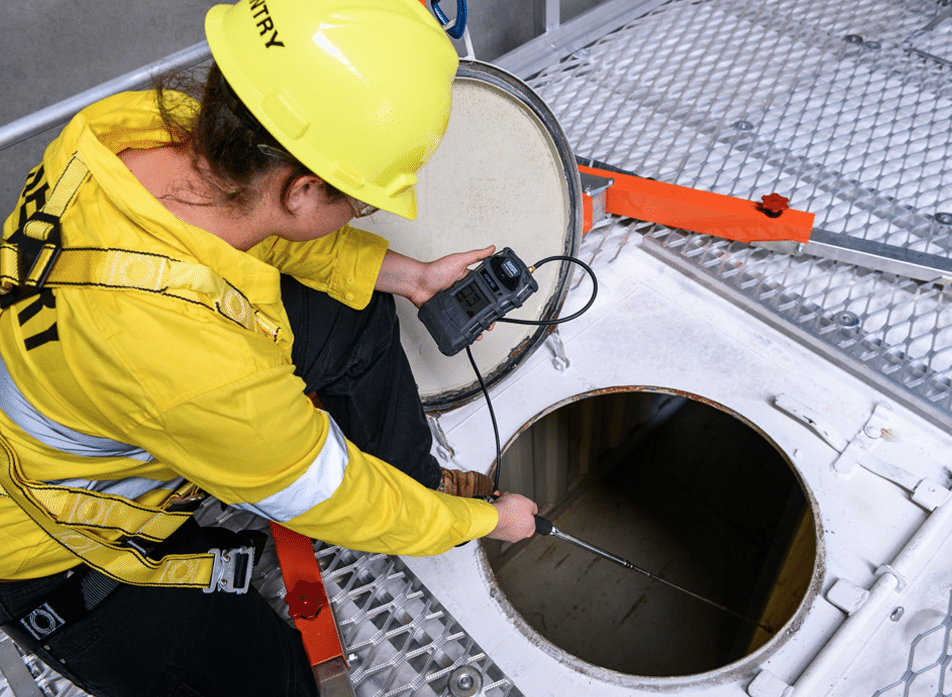MSMWHS217
Gas Test Atmospheres
$1500 (up to 10 participants)
Course Content
This course is specifically designed for workers who may need to monitor potentially hazardous atmospheres in the telecommunications carrier network. It covers the skills and knowledge required to test the working atmosphere using electronic test apparatus, to determine whether it is safe for the proposed work and applies to situations where an individual may be required to carry out gas testing of an atmosphere prior to entering a specific area or workspace, interpret readings and take appropriate actions based on these readings.
The unit is suitable for use in the following situations:
- Confined spaces, enclosed and partially enclosed spaces
- Hot work
- Storage tanks, silos, pits, pipes, shafts, ducts, transport vehicles and ships
- Testing as part of issuing a work permit or monitoring as part of working under a work permit
- Open areas or holding the gas tester by hand
- Lowering the gas tester into a space, e.g. on a line
This course is taught by highly experienced Emergency Services instructors who have a strong background in HAZMAT response. This training course will teach workers:
- When gas testing is required
- How to conduct gas testing
- How to determine if the atmosphere is safe to work in
Learning Objectives
As part of the course, students will train in the following areas:
- Legislative framework for gas detection
- Determining when gas testing is required
- Supervisor responsibilities
- Gas testing permits to work and hot work requirements
- Risk assessments and the need to consider atmospheric monitoring requirements during the risk assessment
- Confined space permit overview
- Oxygen deficiency, oxygen enrichment, lower explosive levels, carbon monoxide, hydrogen sulphide, methane and other gasses
- Exposure limits: TWA’s, STEL’s, IDLH’s etc
- Air densities of common gasses and implications
- Gas testing log sheets
- Gas detector maintenance
- Gas detector bump testing and calibration requirements
- Gas detector records
Assessment
Practical Scenarios: The assessor must observe the following practical scenarios:
- Preparing for and test gas in a confined space, wellhead or other potentially unsafe space or area
- Using and maintain testing and monitoring equipment
- Identifying hazards and control them
- Interpreting readings and take required action
- Following communication and recording procedures
Theory assessment: A written assessment consisting of multiple-choice and short answer questions. The student must complete all assessment questions.
Qualification(s) Issued
The following unit(s) will be awarded to successful participants in this course;
- MSMWHS217 – Gas Test Atmospheres
Additional Information
This unit requires the ability to read and interpret a meter and then communicate the conclusions.
Writing is required to the level of completing required workplace reports/forms.
Numeracy is required to the level of being able to read the instrument and interpret the results as being safe/not safe and so determine the required actions.
Equipment Requirements
We can supply all equipment necessary for you to undertake training.
We actively encourage you to bring along your own equipment.
Please contact us to discuss your equipment requirements.
Course Duration
Face to Face – 7 hours


